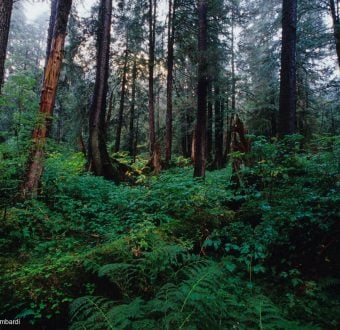The fires in the Amazon illustrate the urgency of the threats facing the rainforest and its people. The Amazon is losing so much forest that it is on its way to a ‘tipping Point’, in which it will fail as an ecosystem if we don’t reverse course. The destruction—with tacit support from the Brazilian government and investors, trade partners, and international corporations—is both devastating local communities and exacerbating the climate emergency.
Unlike dry fire-prone regions, such as the western United States, fires in the tropical Amazon do not burn on their own. The forest only burns when farmers and ranchers intentionally light it on fire to make way for meat production via pasture or plantations for animal feed crops. In order to burn the moist tropical forest, it must be cut, cleared, or significantly degraded first. Fires set in cattle pasture, in particular, often spread out of control.
The scale of coordinated burnings in the Amazon is shocking. The infamous “Day of Fire,” August 10-11, 2019, was coordinated by farmers and ranchers and represented an almost 20-fold increase in the amount of fire over the previous year. Afterwards, some participants declared that the fires were lit in support of President Bolsonaro’s agenda. In 2019, the Amazon recorded almost 90,000 fire hotspots, and the numbers of fire hotspots are increasing over last year. The 2020 fire season has seen its worst start to August in a decade, despite a 120-day fires ‘ban.’
Preventing these fires means preventing deforestation year round, and the fires are just one part of the climate-disrupting forest destruction happening all year. Brazil is the 13th largest global emitter of greenhouse gas, with two-thirds of these emissions estimated to come from forests and agriculture.
The images of a smoky São Paulo sky, hundreds of miles from the typical fronts of deforestation, sparked global attention towards last year’s Amazon fires but also illustrated how the direct impacts of the fires no longer remained in the countryside. The smoke and haze from the fires present a serious public health crisis in impacted population centers in reach of the Amazon. The Amazon has an incredibly precarious healthcare system that has been exposed widely through the impacts of COVID-19. The global pandemic has had a devastating impact on Indigenous Peoples in Brazil who, through colonialism and generations of threats and land theft, have been made especially vulnerable. Isolated regions, in particular, have limited medical care, and even that is predominantly concentrated in the cities. The health impacts of this year’s fires are expected to be more acute, given the rationed medical care and cumulative impact of COVID-19, a respiratory illness.
Despite the wave of international concern after last year’s fires, the Brazilian government has continued to dismantle environmental protections, assault the integrity of Protected Areas like Indigenous Peoples’ lands, and sideline environmental law enforcement. Bolsonaro’s rhetoric and actions have encouraged land theft, illegal deforestation, and a degradation of protected areas. In April, Environmental Minister Ricardo Salles was filmed during a cabinet meeting encouraging the other ministers to capitalize on the COVID-19 crisis, when the world’s attention was diverted, to roll back further environmental protections.
Increasing deforestation in the Amazon is not only a result of Brazilian government policies, but also a product of the international market’s never-ending demand for meat, timber, and minerals from the region. Ending deforestation is possible, but only if the Brazilian government and the companies and governments doing business demand it. Both governments and corporations must honor Indigenous Peoples’ rights,as Indigenous Peoples are the best stewards of the forests. The market must require that its investments respect human rights and end deforestation. The government must restore environmental law enforcement agencies’ presence in the field and properly fund them. The US Government also needs to take a stand for the Amazon and make trade, military aid, and support for Brazil’s OECD nation status contingent on protecting the Amazon rainforest—this ecosystem of critical importance for rainfall, biodiversity, and a safe climate.



